Running Hardware Hackathons

Justin Sinichko, Former Hardware Developer
Article Categories:
Posted on
Six tips and one philosophy for organizing hardware hackathons
A while ago we ran the Pebble Rocks Boulder (PRB) hardware hackathon here in Boulder, Colorado. This was a 48 hour non-stop hackathon focused on the then freshly announced Pebble smart strap. Collectively the goal had been to bring together talented folks and technology in the hopes of generating a handful of clever ideas and projects. However after the dust settled, and the antics were over, what was created was far more than we had expected. We invited teams from around the nation to compete, but instead they ended up collaborating. Teams cannibalized a 3D printer farm, sprawled into one another's spaces, stayed up late debugging each others problems. As organizers we had unexpectedly stumbled into a world that could, in truth, only survive for two full days. It was a taste of festival life but without the extremes. Along the way we picked up some tips and tricks for running this sort of event, and we’d like to share those here in case you decided a hackathon may be a good idea.
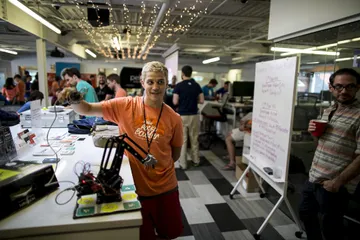
What are hackathons really about?
Successful hackathons frame everything around participants. From the sponsors, to the venue, to the food, the participant experience is the primary consideration. This is the principle that flavors everything. And it should, in theory, make many decisions much easier. From the perspective of the event organizer it is helpful to pivot decisions around a goal… a simple goal you can carry in your back pocket and easily translate or reference. That first goal should obviously be to ensure participants walk away feeling spectacular. The second goal, in very close second, is to figure out everything else you care to walk away with. That might look like specific projects that do XYZ, or it may be a some level of publicity. Whatever it is, the second goal should support the first while also never trumping it.
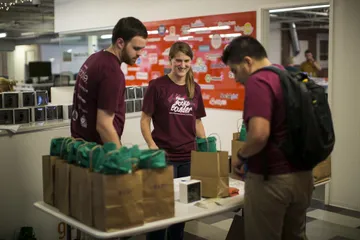
Registration
We wanted to cultivate an atmosphere where eager individuals could move quickly and collaborate together on ideas. Knowing that hardware takes time, and forming teams can be difficult, we decided to invest time upfront and screen teams/individuals to only those we felt would work best together. We spent two weeks receiving and evaluating applications before extending invitations to those potential-participants we were most excited about. About ¾ of our invitations went to teams, while the remainder to individuals. Those that accepted were provided a registration form on Eventbrite and we charged a nominal ticket fee to ensure everyone would show up. Amazingly everyone, literally everyone, was able to self-organize and form or join teams before the hackathon. To facilitate we set up a Slack group for participants and invited everyone, instructed even, to make it happen. Everyone did -- that was a huge win.
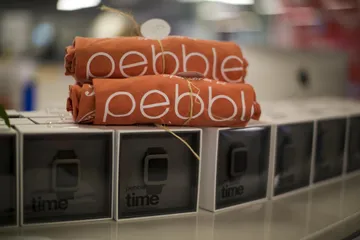
Sponsor
Before Pebble was joined by the likes of Apple, and others, they were pioneers. They were trailblazing and igniting a fire along the way which naturally created a community of serious supporters. They had taken the crown, twice, on Kickstarter for wooing the masses and becoming the undeniable champions of wearable industry. They did it, in part, by building one of the most engaging developer communities. Who would want to participate in a Pebble Hackathon? Well the better question was who wouldn’t?
This should be the sponsor litmus test. If a hackathon needs a major title sponsor at least find one everyone can rally around. This will help keep the event battles focused on logistics. It can be a nightmare trying to organize an event that is uncomfortably trying to sell participants on a brand. Imagine a Facebook sponsored farmers market. It’s that sort of thing. It’s just no good.
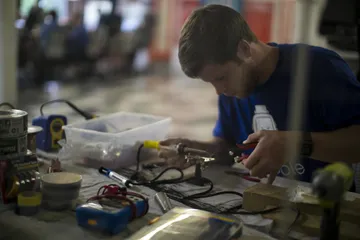
Tools
Hardware hackathons are known for their real-world fabrication component. And one of the easiest steps off the screen (familiar ground) is into embedded electronics. What we appreciate most about this electrical component is the animating life and technical depth it can give projects. However, supporting this type of creativity isn’t easy. First off, unlike software, hardware creatively heavily depends on the tools and resources available during the hackathon! Therefore it is prudent for all hardware hackathons to be outfitted with a fully stocked electronics lab. No exceptions.
A dedicated electronics lab empowers teams to do everything from pull apart boards to fabricate wiring harnesses. During PRB we even had a team show up with their own reflow iron! We were certainly glad (for the venue’s sake) there was a dedicated workbench (albeit tucked into a corner near a window) to use it on.
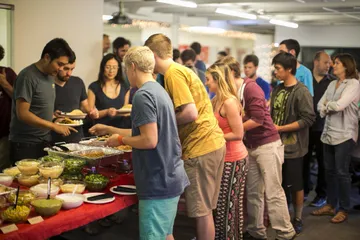
Food
The food thing should be taken seriously. This is doubly true for events that push through the night and stretch for up to 48 hours. At this scale the food logistics are about as important as everything else. For PRB we spent a considerable amount of time sourcing meals and snacks because we wanted to encourage participants to stay together and not disband for meals. It’s a convenience thing as much as it is a safeguard against attrition. A loss of steam = a loss of motivation, especially when projects hit a snag or are not going well. Food sounds the trumpets and rallies the troops.
To make our lives easier we asked about the unique dietary needs of every participant. This wasn’t hard, we just spun up a Google Form and took a survey. We took this knowledge and shopped it around the kitchens and caterers we felt would be enthusiastic about partnering. We wanted tasty local food that would showcase Boulder. And, pleasantly, we found great options all within about two blocks of the venue. These kitchens were all eager to lend us their excess capacity between meals and we were happy to pay a fair price.
Between meals we worked just as hard to keep a stocked supply of local beer, grocery fruit, generic snacks, coffee, and natural energy drinks. This certainly didn’t stop folks from leaving the venue for meals, and we didn’t want to STOP them, but it did present an option that 95% found favorable to everything else.
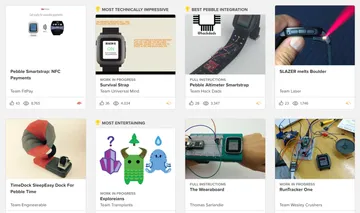
Documentation
It is important to find ways of cataloging hackathon projects. It is both a good way to preserve momentos from the event as well as an incredibly useful repository of information that can be shared around online. One of the goals of PRB was to shout from atop a mountain that the new Smart Strap SDK was open for hacking. To facilitate this public announcement, and lend some voices to the effort, we asked all of the teams to use Hackster as their platform for documenting projects.
Of course we knew that this request was a tall order. Everyone can agree that documentation isn’t exactly a top priority during a sprint event. So something we tried, and something we thought was very successful, was hiring a professional photographer to roam around and help capture team moments. To bring focus to the actual projects we also created a temporary photo studio at the hackathon. The studio was simple but complete. It featured a backdrop and multiple lights, all of which enabled teams to capture great images of their hard work. These small efforts breathed life into the documentation effort and combined to add a bit of polish and energy to the Hackster projets. Those projects can still be found online!
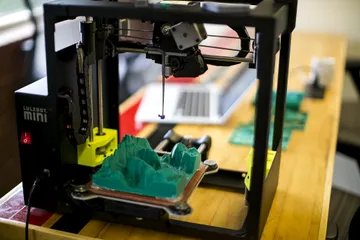
Judging
At long last hackathons come to a close and, like every good endurance sport, they culminate with some time on a podium. This final judgement is a great way to give teams a chance to share the fruits of their labor while also specifically acknowledging stand-out performances. For PRB we enlisted the help of local hardware entrepreneurs, engineering professionals, and creatives to provide a well-rounded and *fingers crossed* unbiased perspective. We blocked out time for everyone to roam around and visit with one another’s project. During this period judges also met with teams and interacted with their projects. The judge’s objective was to settle on those teams which were most deserving of a variety of prize buckets. Finally, PRB crowned the event with an awards presentation and a final slideshow documenting 48 hours of antics. If you do a slideshow, be sure to feature everyone at least once.
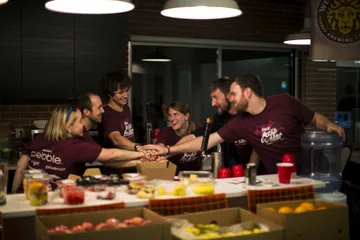
Final Thoughts
Hardware hackathons are a unique beast. They share many of the challenges typical hackathons face in addition to many others not mentioned here. Other considerations range from the proximity of the nearest shower to the bandwidth of the venue’s internet. Will you need a first aid station? Most definitely. All of these aspects add up to be a significant effort and, frankly, a bit of a logistical nightmare at times. That’s why it’s nice to take a principled approach to these things. In our experience the best thing to bank on is putting the participant’s experience at the center of every consideration. Everything else will work out.